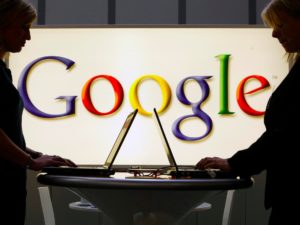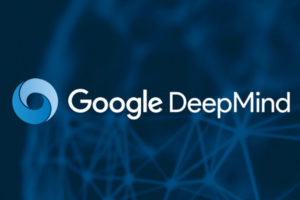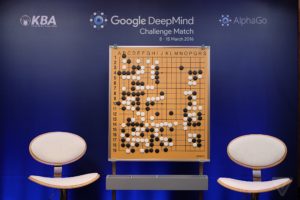Google DeepMind: Everything you want to know about
“Superhero of artificial intelligence” this was stated by The Guardian to DeepMind cofounder and CEO Demis Hassabis.
Demis Hassabis is a former child chess prodigy with degrees in computer science and cognitive neuroscience from Cambridge and University College London respectively, Hassabis co-created the video game “Theme Park” when he was just 17-years-old.
In 2010, Hassabis founded his biggest company: DeepMind.
So,

DeepMind founder Demis Hassabis
What is DeepMind?
-DeepMind is a London-based startup that wants to “solve intelligence” and use it to “make the world a better place.”
The company is developing sophisticated self-learning algorithms that can excel at particular tasks when it is given a dataset to learn from. The algorithms are created by blending research and expertise from neuroscience and machine learning.
Suleyman (Hassabis’s childhood friend and co-founder of DeepMind) explains:
These are systems that learn automatically. They’re not pre-programmed, they’re not handcrafted features. We try to provide a large set of raw information to our algorithms as possible so that the systems themselves can learn the very best representations in order to use those for action or classification or predictions.

DeepMind cofounder Mustafa Suleyman
The systems we design are inherently general. This means that the very same system should be able to operate across a wide range of tasks.
That’s why we’ve started as we have with the Atari games. We could have done lots of really interesting problems in narrow domains had we spent time specifically hacking our tools to fit the real world problems – that could have been very, very valuable.
Instead, we’ve taken the principal approach of starting on tools that are inherently general.
AI has largely been about pre-programming tools for specific tasks: in these kinds of systems, the intelligence of the system lies mostly in the smart human who programmed all of the intelligence into the smart system and subsequently these are of course rigid and brittle and don’t really handle novelty very well or adapt to new settings and are fundamentally very limited as a result.
We characterize AGI [artificial general intelligence] as systems and tools which are flexible and adaptive and that learn.
We use the reinforcement learning architecture which is largely a design approach to characterize the way we develop our systems. This begins with an agent which has a goal or policy that governs the way it interacts with some environment. This environment could be a small physics domain, it could be a trading environment, it could be a real-world robotics environment or it could be an Atari environment. The agent says it wants to take actions in this environment and it gets feedback from the environment in the form of observations and it uses these observations to update its policy of behavior or its model of the world.
In January 2014, Hassabis sold DeepMind to Google for £400 million in what is Google’s largest European acquisition to date.
How is it being used in Google?
Using certain DeepMind algorithms to make many of its best-known products and services smarter than they were previously.
Suleyman explains:
Our deep learning tool has now been deployed in many environments, particularly across Google in many of our production systems.
In image recognition, it was famously used in 2012 to achieve very accurate recognition on around a million images with about 16 percent error rate. Very shortly after that, it was reduced dramatically to about 6 percent and today we’re at about 5.5 percent. This is very much parable with the human level of ability and it’s now deployed in Google+ Image Search and elsewhere in Image Search across the company.
As you can see on Google Image Search on G+, you’re now able to type a word into the search box and it will recall images from your photographs that you’ve never actually hand labeled yourself.
We’ve also used it for text and description. We use it to identify text on shopfronts and maybe alert people to a discount that’s available in a particular shop or what the menu says in a given restaurant. We do that with an extremely high level of accuracy today. It’s being used in Local Search and elsewhere across the company.
We also use the same core system across Google for speech recognition. It trains roughly in less than five days. In 2012 it delivered a 30 percent reduction in error rate against the existing old school system. This was the biggest single improvement in speech recognition in 20 years, again using the same very general deep learning system across all of these.
Across Google, we use what we call Tool AI or Deep Learning Networks for fraud detection, spam detection, handwriting recognition, image search, speech recognition, Street View detection, translation.
Sixty handcrafted rule-based systems have now been replaced with deep learning based networks. This gives you a sense of the kind of generality, flexibility, and adaptiveness of the kind of advances that have been made across the field and why Google was interested in DeepMind.


